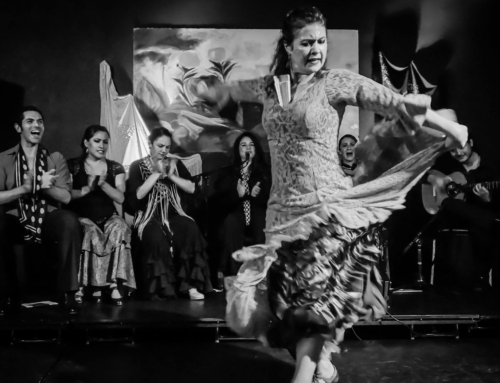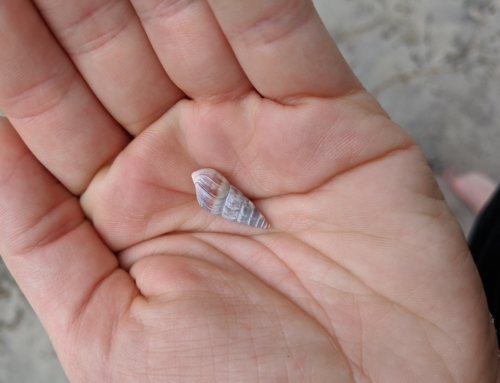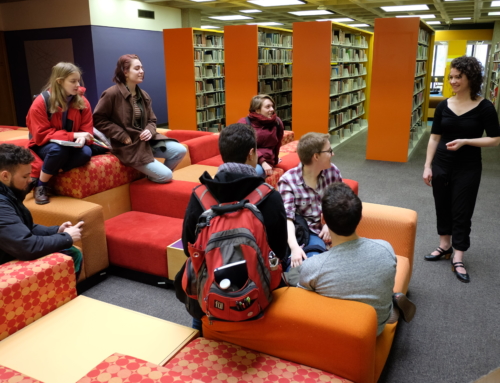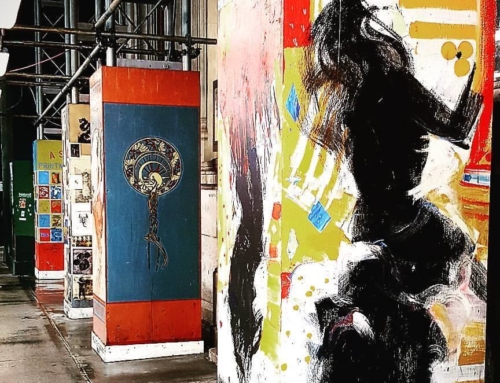Last year, I helped a colleague in Spain with her thesis for the Conservatorio Superior de Danza María de Ávila. She had spent a month in the U.S. observing and helping flamenco Arts Education programs. She had a lot of questions for me to better understand how arts funding works in the U.S. It turns out, I probably learned more from helping her than she did. (Yay for cultural exchange!) We spent some time looking at charts of how much money is given to the NEA by the government (compared to U.S. military spending it seemed minuscule, but compared to Spain’s arts budget, it seemed pretty high, though we have to keep in mind Spain is a much smaller country). Then she asked me about non-profits. I never realized how American the idea of non-profits is, and how they fit into the U.S. history of the people wanting to decide where their money goes. This research actually changed my view of the NEA, so when people ask me about how I feel or what I think (as an artist) about the NEA’s budget being threatened, these are my thoughts:
First off, I am incredibly thankful that arts are not fully funded by the government in the United States; one of the greatest parts of being an artist in the U.S. is our ability to self-produce. (Yes, self-producing takes enormous amounts of work, gives me grey hairs from all the stress, and is risky–but it’s possible.) In Spain, state-funded intervention in flamenco decreases the diversity in what is presented because it decreases the diversity of economic resources that fund flamenco. Author of Flamenco y Poder, Francisco Aix García, believes that having only state funded flamenco performances endangers the art’s autonomy, and he even goes so far as to refer to flamenco’s dependence on the government as Stockholm Syndrome.
On the surface, state-funded programs might seem like a good idea given they provide free festivals for the public and funding for large performances with large casts of highly paid performers. Many of my colleagues in Spain have expressed frustration at the difficulties of producing and creating your own show. It’s nearly impossible to self-produce a performance without losing money. The Spanish public, used to paying nothing for performances, sees no reason to have to buy a ticket to see flamenco. Juan Valderrama, a flamenco singer, explained the phenomenon as follows:
“Tú llegabas con un espectáculo tuyo grande a un sitio y ponías a mil pesetas la entrada y no iba nadie, porque el alcalde de aquel mismo sitio ponía un espectáculo de balde, y encima mejor que el tuyo, porque él tenía todo el presupuesto de al Delegación de Fiestas para gastar y tú dependías de la taquilla.” (Aix García, Flamenco y Poder p. 322)
(You would arrive with your own big show and you would make the ticket a thousand pesetas, and no one came, because the mayor of that same place had put up his own free show and on top of it better than yours, because he had all the budget of the Delegation of Fiestas to spend, and you depended on the box office.)
Artists in Spain must compete for a share of the government funds, basically competing for a spot in the line-up of any given festival. The AADF (Agencia Andaluza para el Desarollo del Flamenco) chooses the headline artists and does not make its criteria for assessment open to the public. According to former head of the AADF, government control of flamenco is necessary because Europe relies heavily on culture as an economic resource. But if the government controls the resource, the artists lack autonomy. On top of that, the festival directors can change depending on what political party is in power. Flamenco, like any economic resource, has become regulated by the Spanish government—the government dictates the who, what, where, and when of flamenco, rather than the audience or aficionados, or even the practitioners.
Let’s face it, self-producing performances often requires more money than can be gained from ticket sales alone and capital before money from ticket sales is received. That’s where artists require grants, or patrons (or even an online fundraiser). Is it harder to self-produce if you have no capital?–Yes. Is it impossible? No. Thanks to non-profits and the idea of being able to donate money to any organization and receive a tax-break for that donation, Americans can decide where their extra money goes (if they have any). Maybe you like an independent visual artist and want to buy one of their works, maybe you love the ballet, maybe you don’t even like arts and want to donate to an environmental organization–whatever your preference, you can choose to fund various organizations. And, better yet, the money usually goes directly to who/what you want to fund rather than being filtered through layers of government bureaucracy. I am not trying to guilt trip anyone into donating money, but it’s a unique part of the American economy that helps diversify our arts.
Unfortunately, making a living as an artist–solely from creating art–is nearly impossible. Most artists I know work in arts education in some way to make a living. Art for arts sake seems to be disappearing and art for education’s sake replacing that. I have worked as a teaching artist for several years. I love it; I love teaching dance. I think arts are integral to education and kids need to experience art from kindergarten through high school and beyond, and an integral part of learning critical thinking. But it would also be great if artists could focus solely on creating. Many European governments have stipends for artists, such as the French government’s unemployment for artists. In the U.S., it’s difficult to receive arts funding without an outreach, educational, or social justice aspect of the work. It’s not about making art for arts sake. Why don’t we value art just as art? I believe experiencing a performance, a painting, a poem, etc., reminds us of our humanity. Maybe more art for arts sake would connect us even more on a human level. Any good work of art speaks to its audience, educates, and inspires. (Maybe a work doesn’t speak to everyone–luckily we don’t all have the same tastes and we can have a diverse art market for that reason).
But what about how the NEA bring the arts to underserved communities? This is one of its main missions. Just to look at another perspective, I’ve never seen a community without arts. Many rural communities have a different idea of art–not a Eurocentric western vision of what “quality” arts are. Why bring in artists from outside communities to rural areas? Yes, the cultural exchange/exchange of diverse ideas is valuable, as is showing the possibility of making a living from the arts, and exposure to arts/artists outside the mainstream. But many rural areas already have community gatherings that include music and dance, visual arts, etc. Why are these non-western arts not valued as much as the ballet, theater, musicals, visual arts as we see in galleries? Not all art seeks to be marketed as a product, and much of the art in rural communities serves multiple purposes beyond the individual, such as community building, carrying on traditions, for rituals and ceremonies, for memorials, for healing, and so much more. Placing more value on arts that can be consumed skews how we define arts.
It’s no surprise that the NEA has a complicated political history. Until the 20th century, congress had generally been against creating government funded arts programs, as that was beyond the reach of the constitution and would hinder artistic freedom. Giving government the power to fund arts was seen as a step towards censorship, communism, dictatorship, etc. Shortly after the revolution, government funding for arts brought to mind the elitism of Britain from whom the U.S. had just declared its independence, distancing itself from Britain’s mode of governing. The NEA, created in 1965, is tied closely to Cold War and anti-communist politics of the time. Although the space race received more publicity, arts were seen as another way to prove that democracy defeats communism. It was another way for America to prove itself to the rest of the world. Which means, that artists funded by the NEA would have to exhibit American ideals, and a quality that could compete with other country’s ideas of quality aesthetics. I would say that definitely puts a limit on artistic freedom. Interestingly, the creation of the NEA was also seen as a step away from materialism. As the idyllic dreams of suburbia had taken a hold of the American imagination in the mid 20th century, many politicians saw this as a step away from American values of independence, non-conformism, and immaterial values. At this time, some politicians hoped the NEA would help support independent artists, maintaining a value on individualism and freedom of expression away from consumerism.
The history, politics, and ideas around the NEA are complicated. It might surprise many to learn I am an artist who is not afraid of the NEA being threatened as long as the general public remembers that it is also their responsibility to support the arts, and the best part of that perspective is, you can choose who to support. Donating is great if you have the money, but ticket sales (for performing arts) also support the artist. Or if it’s a musician you like, buy their music, go to a concert (don’t just Spotify their songs). It’s everyone’s responsibility to keep arts alive, not just the government. And to also remember to look beyond Euro-centric arts and mainstream culture.
For more information on the NEA: Federalizing the Muse: United States Arts Policy and the National Endowment for the Arts, 1965-1980 by Binkiewicz, Donna M. (2004)
For more info on the socioeconomics of flamenco: Flamenco y Poder by Francisco Aix García (2014)










Leave A Comment